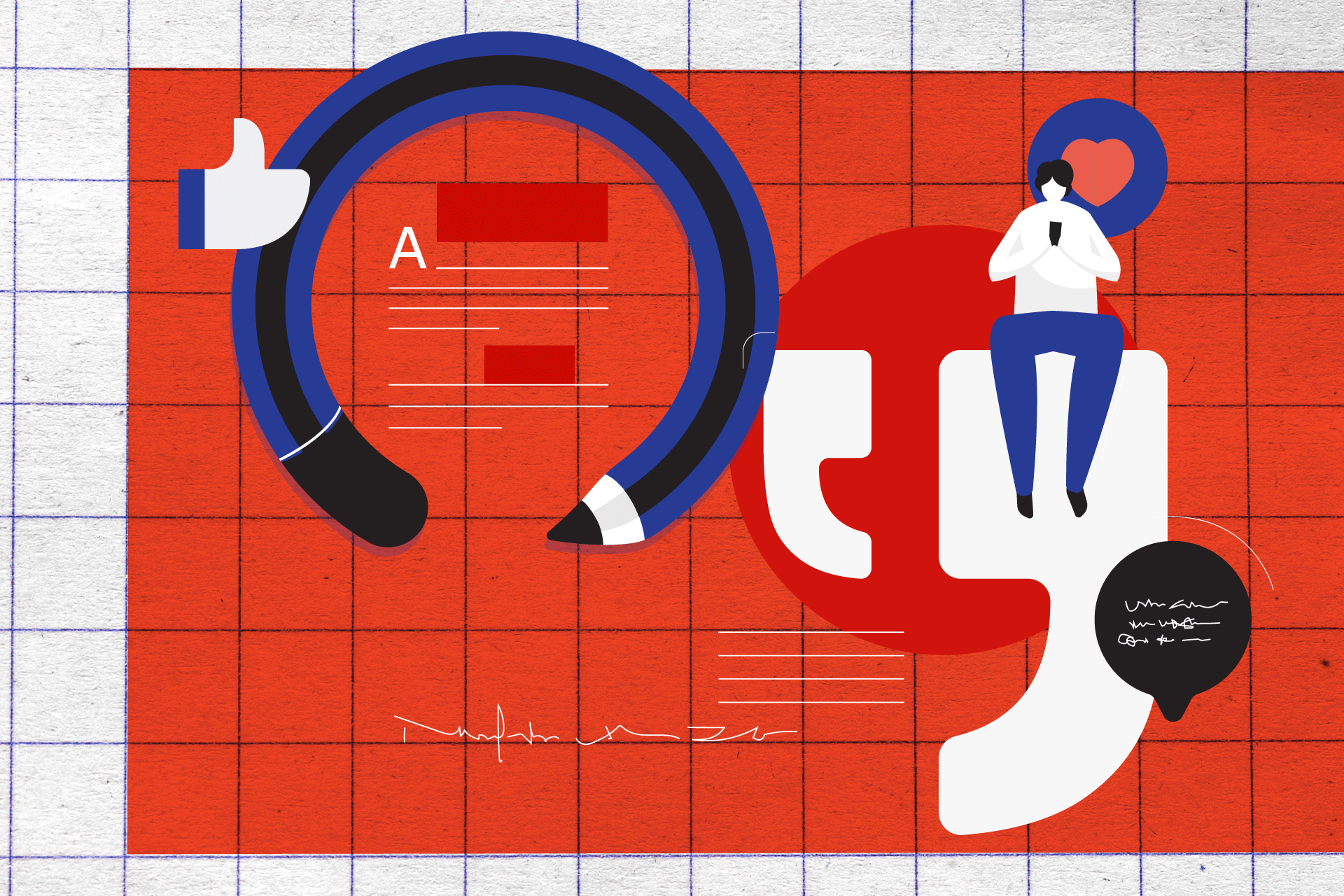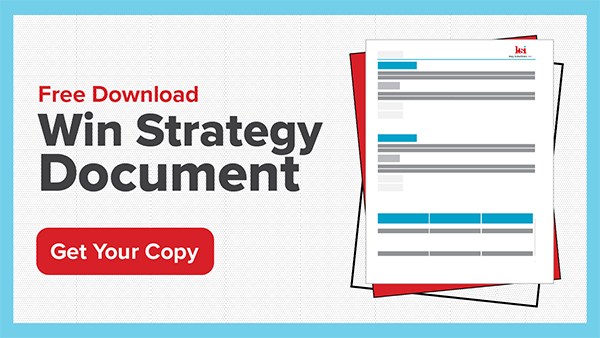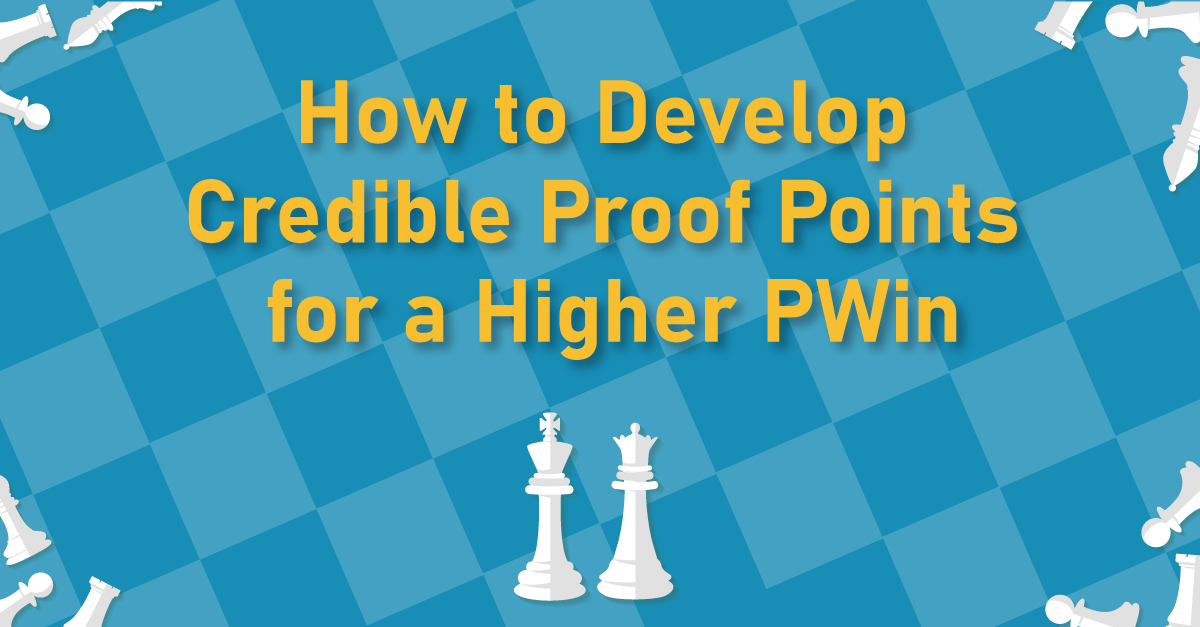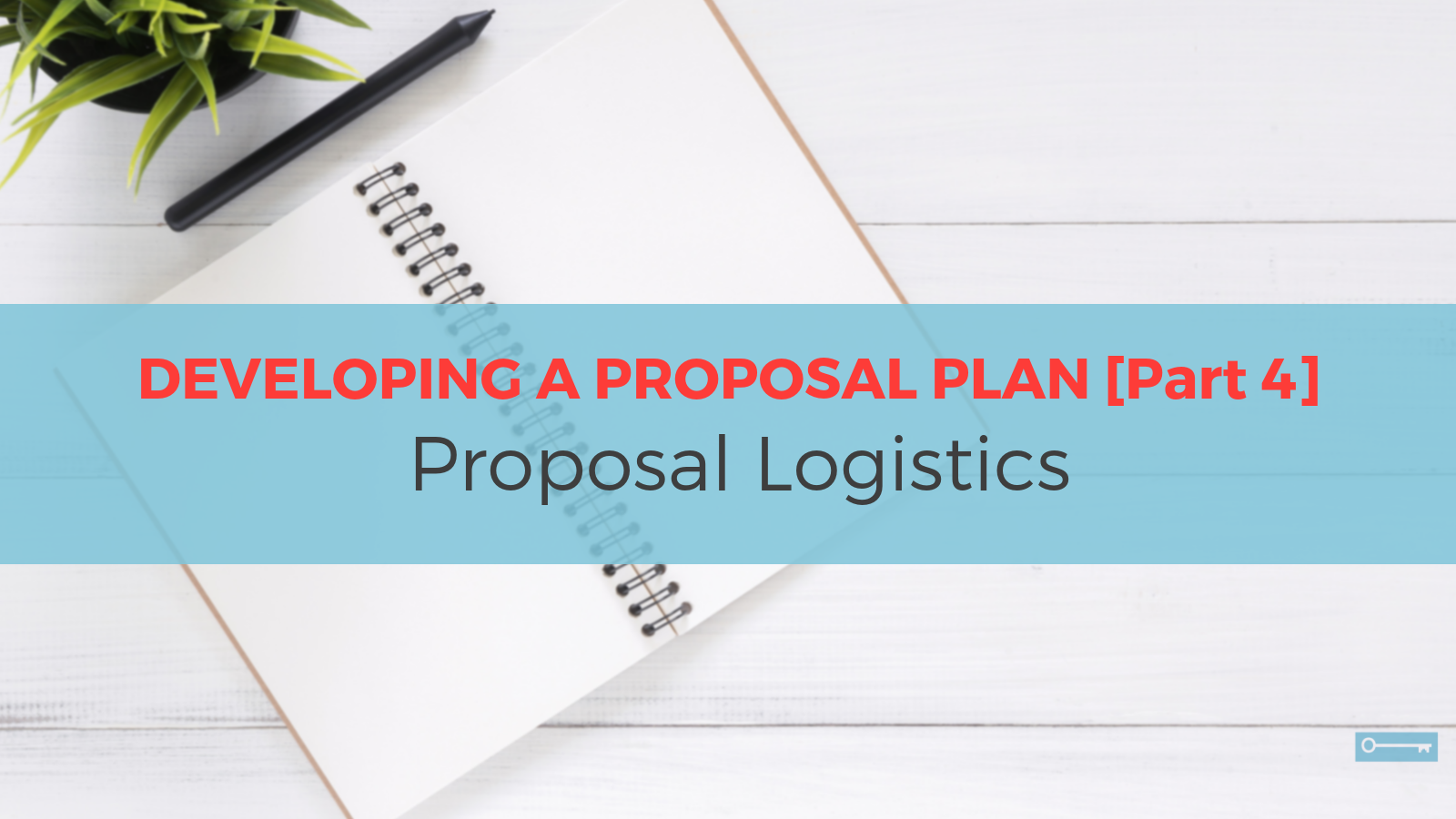This is the third part of our Proposal Plan series, that discusses developing the Win Strategy.
Experienced Proposal Managers develop a Proposal Plan to guide them through the proposal effort. A Proposal Plan is a comprehensive set of documents, instructions, processes, tools, and templates that aids in the development of a winning proposal.
The Proposal Plan addresses and guides proposal activities at six major points in the proposal process:
- Understanding the Requirements
- RFP Analysis
- Win Strategy
- Proposal Logistics
- Proposal Writing
- Color Team Reviews
During Part 3, the Win Strategy, those individuals who have an in-depth understanding of the customer, the company/team’s product and services offerings, and the anticipated requirements of the RFP meet in an all-day or two-day session to develop the team’s written plan for winning the work.
Initiated by the Capture Manager, with participation by the client’s Business Development Manager/Account Executive, knowledgeable members of the company’s teaming partners, the Proposal Manager, and often technical Subject Matter Experts, the Win Strategy session works best when conducted by a trained facilitator.
The Facilitator guides the team through specific exercises designed to elicit the major win strategy elements that will be documented for the group. Win Strategy documents include:
1. Win Themes and Discriminators
Win themes are messages that contain a feature, claim, or benefit that addresses some critical or major issue of concern to the customer that are likely to resonate with the proposal evaluators. Discriminators are those features, claims, or benefits that genuinely distinguish, (i.e., differentiate or discriminate) the company/team from its competitors.
The win themes and discriminators are inserted at strategic points in the proposal and comprise the company/team’s primary “sales” message.
2. Source Selection Board Major Concerns, Biases, and Hot Buttons
This exercise views the upcoming procurement through the “lens” of the individual Source Selection Board (SSB) members. SSB member concerns, biases, and hot buttons may not be obvious in the RFP but can be expected to factor into the award decision.
Through insight provided by the company’s business development manager/account executive and knowledgeable teaming partners about the perspective of individual SSB members, these concerns, biases, and hot buttons are documented, along with the strategy for addressing and/or mitigating them. This information is also inserted where it is most relevant in the proposal.
3. Competitive Assessment
The team collectively discusses the competitive landscape, the companies that will be bidding against them, and the strengths and weaknesses of each, identifying opportunities to “ghost”, or sell against, competitors’ individual strengths and weaknesses. This information is also documented and provided to the proposal team for use at strategic points in the proposal.
4. Notional Winner Profile
The Facilitator and the team construct the Notional Winner Profile, which is a compilation of the optimum credentials, capabilities, experience, and attributes of the likely winning company/team. It represents the characteristics of a hypothetical “ideal” company or team of companies to perform the work.
The Notional Winner profile becomes the benchmark against with the bidding company’s decisions on strategy, teaming, and competition are made. This document is used to help invest the bidding company/team with the characteristics of the ideal company throughout the proposal process to improve its likelihood of winning.
5. Offer Design to Win
The Offer Design to Win is the key strategic element of the Win Strategy. It captures and communicates the “Top Ten” (or fewer) elements or features of what the company/team is proposing and why it is of direct benefit to the Government. To qualify for inclusion in the Offer Design, the theme or feature must be perceived to be compelling or unique enough to make a difference in winning the proposal (for example, the experience and past performance of the prime contractor; a unique technical approach that addresses key concerns of the evaluators; new or proven technologies to improve performance, reduce cost, and/or reduce risk; and/or new systems, policies, processes, or techniques that save time and money or improve quality, or all three).
The Offer Design to Win (the company/team’s proposal’s key features) leads off the text in the Executive Summary and in the introductions to various sections of the proposal, where the key selling points can be best evaluated and point-scored. The key features are supported by explanations of concepts and “proof points” to demonstrate their value to the customer.
Once developed, Win Strategy documents are used to develop proposal work packages and serve as a guide for writers and review teams who can give your proposal the “winning edge."
TAKEAWAYS:
Does your company develop a win strategy with themes and discriminators for all work being bid? Does your staff have the customer intimacy that allows them to identify any customer concerns, biases, and “hot buttons” so that they can be effectively addressed in your proposal?
Do you have a thorough understanding of the competitive landscape, where your company and its products and services fit in, and the unique capabilities that your company will bring to the contract? Make sure your team has all these in place before you bid.
This article was originally published in December 2013 and updated in August 2018. For a more up-to-date resource, check out "How to Develop an Effective Win Strategy."








